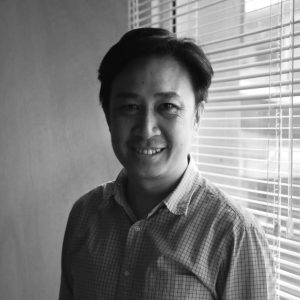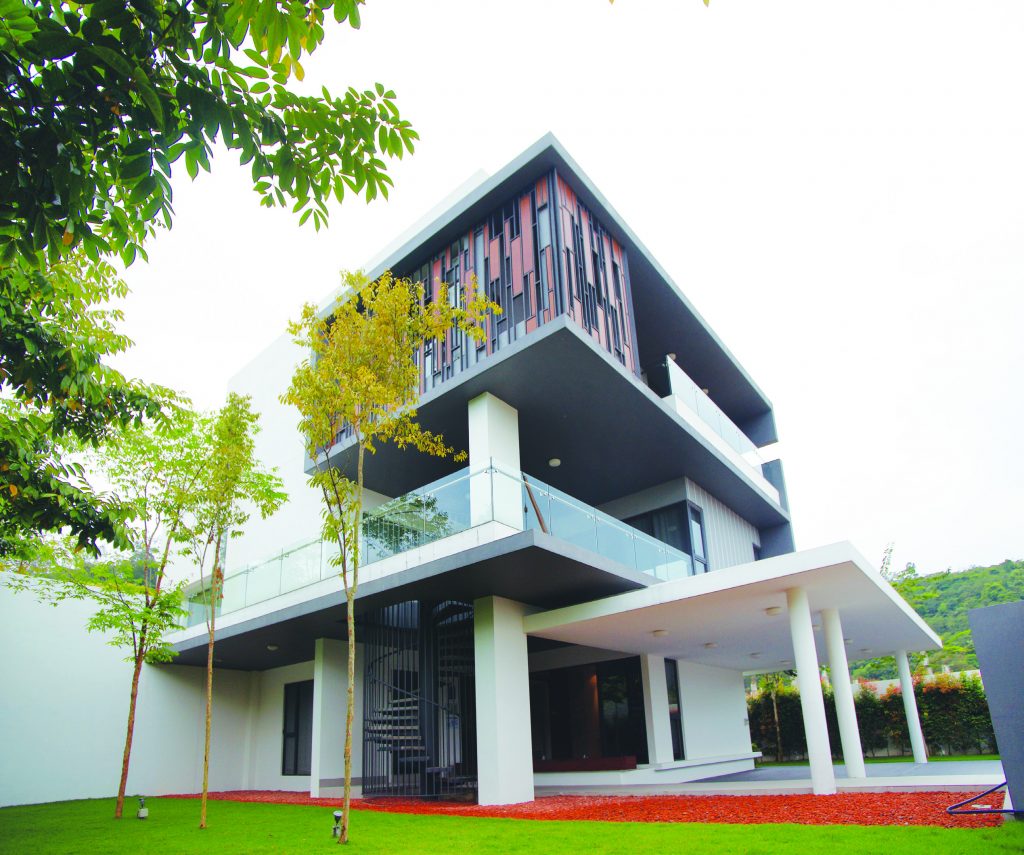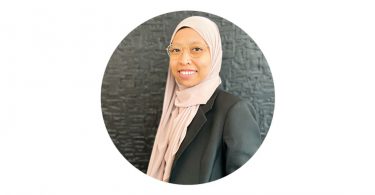With more than 16 years of professional experience with several international firms, Ar Michael Ching’s passion and active interest are in Green design. Ching is a director of CH+I Architecture Sdn Bhd and BGreen Design Sdn Bhd, both established in 2010. He was a council member of the Malaysian Institute of Architects (PAM), a member of the Green Building Index accreditation panel and a board member of the Malaysia Green Building Confederation.
Why did you choose to become an architect?
If you compare architecture to other professions with similar historical lengths, you will find that it is an odd discipline. It has no definitive syllabus or standard curriculum. It is in constant self-reinvention and discovery. It neither exists only in the realms of scientific logic nor artistic expressions, but it has notions of proportion and grandeur, vernacular, artistry, philosophy, sociology, and even politics—no one profession has that kind of reach and breadth.
However, this understanding only unveils itself once you have started your architectural journey. Vain as it might sound, I think it’s safe to say that most people in the profession are attracted to the flamboyant side of it at first and only develop an appreciation towards it much later. I am one of those.
How would you describe your signature style?
The goal of achieving a signature style or a check list of ‘must haves’ is never intentionally present in my designs. The fundamental approach is always to establish our intervention and possible outcomes first. Is it rational? Is it advantageous? Is there ambiguity? Is there potential or possibility? The rest of it comes either subconsciously or habitually. Sounds mundane; however, Twin Palms Sungai Long (Phase 3A) boasts deep recesses, semi-outdoor spaces and atriums for naturally lit and ventilated interiors in a deep building configuration in all cases, a pragmatic foundation is required as building materials do not levitate, and the appreciation of architecture by users is usually on a subconscious basis.
What are the main objectives that you try to meet in every design?
I try to move the sustainability agenda an inch at a time, even if it is just implementing simple basic passive design strategies or a rain water harvesting system. Slow changes in the built environment, and its acceptance as a norm, will be beneficial to society in the long run.
What would you say is the major strength of your design studio?
I believe it will be the ‘age’ of the design studio itself. The core team in the office is of a young age, as such, most of the works that we produce are still in the experimental cycle and do not necessarily conform to a certain style or movement. Instead, we are always looking at the innovative aspects to a solution.
The other strength is that the firm has a certain agility and nimbleness in it. The centralising factor in our approach is the design solution. Unlike the tiered In The down central command approach and approval, the teams dissect the issues, and we overlay the solutions and findings. I can downsize it to a single man or a consensus of groups. I think this gives a level of maturity to the design.
What’s your guiding approach to design and in managing clients’ expectations?
The guiding approach of my design has always been the idea of ‘for the project’—what is the best solution, what is beneficial, what is the best approach to the client’s intention and requirement? I tend to be more of an advisor then a consultant to the client. As a consultant, we might reserve our own opinions and work only with the client’s intention. However, by engaging in the overall brief early on, I am able to produce better outcomes.
Could you give an example of a successful project you have led from inception to completion?
Two projects come to mind that can best explain my approach. The first is a single bungalow at Gita Bayu. I managed to convince the client of the concept that ‘small is beautiful’. The overall plinth of the bungalow only occupies 40 per cent of the site, allowing the remaining space as
landscape. This lush greenery improves the microclimate, thus, lowering the amount of energy required to cool the building .
The other one would be a scheme of repetitive bungalows at Twin Palms Sungai Long (Phase 3A). The intervention here was to break away from the conventional approach in designing repetitive bungalows. I managed to convince the client to design a transition space between the car porch and the main entrance, which creates an atmosphere of ‘returning home’. It is quite interesting to see now how each individual owner uses this space.
Could you highlight some of your sustainable design efforts in your projects?
Some other strategies employed in the earlier-mentioned Gita Bayu project include proper positioning of fenestration and sunshading devices to reduce solar heat gain through the façade, while maximising cross ventilation and daylight harvesting; a composition of roof garden and double roof system to isolate and reduce solar heat gain; the harvesting of rain water for irrigation purposes; and the use of local and recycled contents.
A bungalow project in Bandar Kinrara shares similar passive design strategies, with some additional layers, such as the feature wall, which doubles as a cavity wall at the east orientation; a pre-heated solar water tank; as well as vertical wetlands that recycle the grey water from bathrooms for irrigation purposes. Solar photovoltaic and solar air-conditioning are used to reduce energy consumption. The heat generated from the compressor of the solar air-conditioning is recovered to heat up the water in the solar pre-heated water tanks.
What are some of the major challenges faced by the studio and the building industry in Malaysia in general?
If I were to critique, it will be the public’s perception, awareness and acceptance, not just of the climate-responsive and sustainable agenda, but of the benefits of a designed environment as a whole.
There is always a higher tendency for our design, building solutions, guidelines and legislation to use a more proscriptive approach, instead of a performancebased specification. In fact, the acceptance of any new system has to be with precedence or something that has been adopted and used in the neighbouring region. The irony of this is that it usually follows the flavour of the week. As such, we always find a myriad of ‘solutions’, each aliened to the other that it’s being imposed on.
We lack the innovative and critical thinking in exploring and solving our own situations. Even if we did, we would always fall back to the proscriptive side of things due to acceptance of the norm.
But that is slowly changing. The younger generations, people who are more attuned towards global issues, do not just look at it only at the surface but understand the core agenda itself.
What are some of the major accolades you have won, and how have they motivated you?
I have been recognised by PAM as one of the ‘30 under 40’ emerging architects in 2011. The Gita Bayu project was awarded the Silver Award (Green Home Category) at My Dream Home Competition 2011. For the Twin Palms Sungai Long and Twin Palms Kemensah projects, I have been nominated for the PAM Awards 2016. I have a few more projects being featured in newspapers and magazines. It is motivating to know your projects have been presented to a much wider audience.

 Hong Kong
Hong Kong Singapore
Singapore Indonesia
Indonesia Tiếng Việt
Tiếng Việt ประเทศไทย
ประเทศไทย












